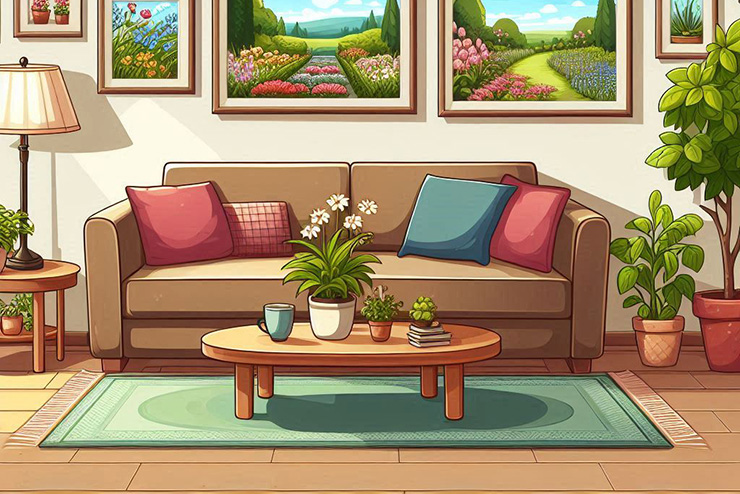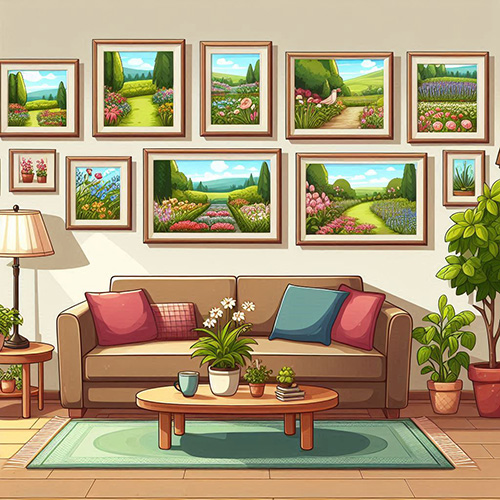
Thirteen years ago my husband, Mark, and I bought a rectangular little house on a rectangular green grass lawn. It reminded me of the little plastic houses on the board game Monopoly. We had barely finished unpacking the dishes when my head started spinning with my elaborate plan. It was time to bring my deepest desire to fruition–create an outdoor retreat for Mark. As his primary progressive multiple sclerosis was separating him from the world, I wanted to create a beautiful world around him.
Early on in his disease, I was told, “Leslie, there is nothing you can do to take away his MS or affect how he is feeling. All you can do is affect the environment around him.”
Knowing the healing qualities of gardens and serene outdoor spaces, I set out to transform the outside. Meanwhile, he brought life to the inside of our little house.
Season after season, we planned during the winter months what our next phase would be as soon as the first thaw appeared, if not sooner. Garden beds were dug, patios and terraces laid down, and trees, shrubs, and perennials were planted. Mark wanted color and scent, and to attract butterflies, hummingbirds, and bees. Every view from every window was taken into consideration.
One Spring, Mark began photographing what we were growing. He has always had an astonishing eye for detail. As much as I thought I knew about the names, colors, and growing habits of the plants in our garden–when he started photographing them, an entirely new world opened up to both of us.

Now our kitchen, living room, and bedroom are adorned with his exquisite garden photographs. And, we have created books, tote bags, notebook covers, and blank greeting cards, taking our quiet garden retreat out into the world. Friends, family, and I share many of the same plants, as swapping and adopting is such a pleasurable and affordable way to fill up empty garden beds.
Gardening has shifted my attention to a quiet, inward space. I crave the silence of the early mornings. Well, let me modify that statement. During the warm months, I crave the natural sounds of the birds chirping and squirrels barking as they chase each other through the tree branches. And listening to Matilda, our resident cricket. In the stillness of winter, the thinness of frozen air crystallizes the sound of our metal wind chimes, filling my ears with their echoing harmonics. I call our house a hermitage, as it helps me frame in a very positive light our quiet life, set apart from the community.
Five years ago I wrote in my journal: I have recently decided to regard my time in the garden as the farmers do in the fields. Constant attention during the growing season tuned into its ever-changing needs. The rhythm of this cycle is very nourishing to me and now that Mark is getting more involved it feels more substantial in a new way. It feeds my need for space and rural living, even though I am not able to do this in real life. But with some imagination, I can pull it off.
Our gardens have opened and strengthened me as an artist and as a care partner. Designing and building them, maintaining them, and living with them now for over a decade has solidified what I was told many years ago. I do have the ability to affect the environment around Mark.
I wrote: All summer long he showed me details of flora and fauna I was previously unaware of. We spent hours in peace and joyful exuberance studying his thousands of photographs.
We experienced a new kind of serenity. ❖
About the Author: Creating a quiet garden retreat as a way to support chronic illness is serious business, yet there is a sense of playfulness and delight that is discovered throughout the process. Leslie Hanlon named the crickets Matilda, and have silent conversations with the birds, sky, and changing seasons. Photography and writing have expanded how the garden informs and nourishes her. This retreat is an active part of her health and well-being.



